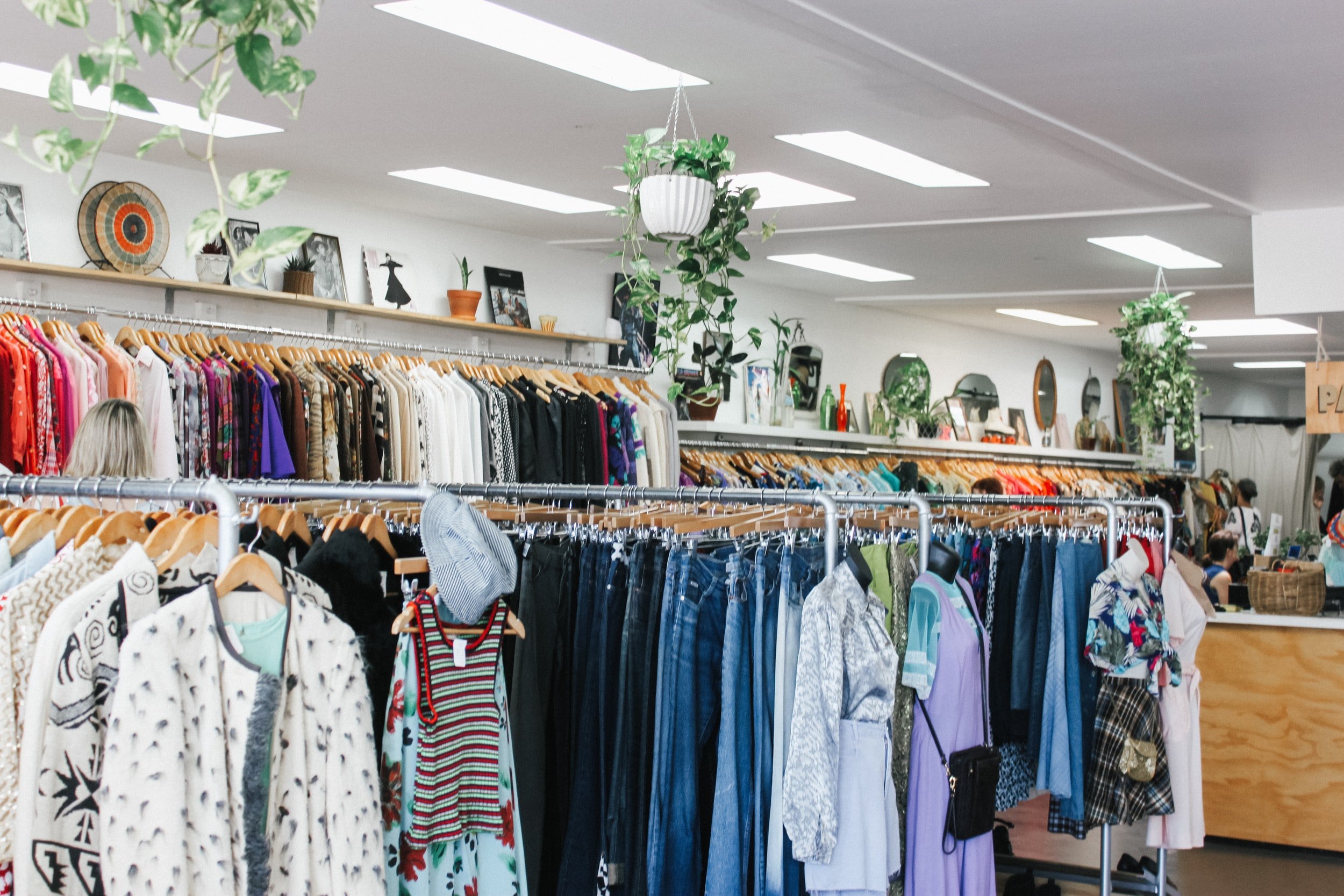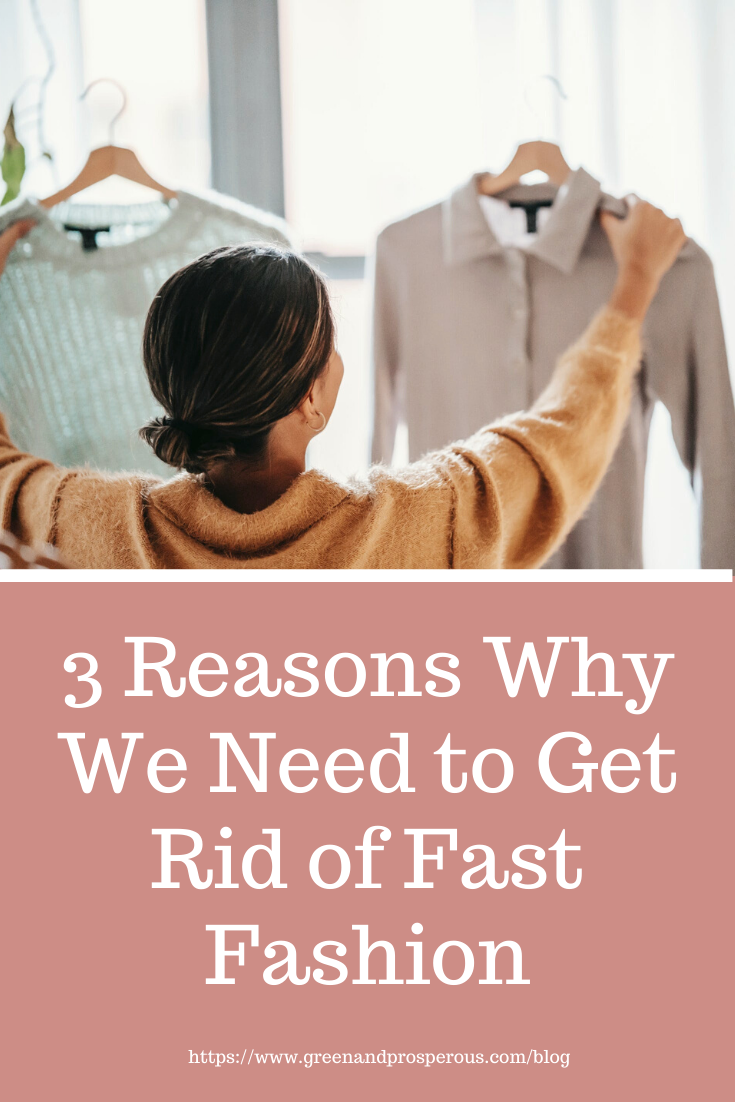3 Reasons Why We Need to Get Rid of Fast Fashion
/The manufacture of clothing is a major contributor to the climate crisis. According to the UN Environment Programme, fashion accounts for up to 10% of carbon dioxide output around the world, more than the international travel and shipping industries combined. There are so many fashion brands that are putting a strain on our environment, and it’s ultimately unclear whether fast fashion can truly ever be sustainable: Many clothing brands such as Forever 21, Zara, H&M, Urban Outfitters, Rip Curl, etc. engage in manufacturing practices that are anything but. sustainable.
These brands are not only putting a huge strain on the environment but on their workers as well: many of them have been caught paying less than minimum wage. They have also been exposed for their unsafe work environments and how they treat their workers on the job. Yet brands such as these have made promises to be more sustainable and treat their workers better. Should we believe them?
The Impact on the Environment
Thousands of gallons of water go into making clothes every day. The fashion industry accounts for about 20% of global water waste. This is especially apparent in the fast fashion industry.
It takes about 3,000 liters of water to produce one cotton shirt. Companies that are participating in fast fashion are contributing to massive amounts of water waste. This water is filled with toxins and can very rarely be recycled; instead, the waste is usually dumped into natural waterways.
These companies often move their factories overseas so that they can continue this process without penalty. They pollute waterways and leave behind a big carbon footprint.
The clothes that these fast fashion brands make encourage people to participate in excessive consumption practices. About 57% of all discarded clothing ends up in landfills, most of which are already full yet growing bigger.
What happens to all this trash if so many landfills are already overflowing? The trash is usually incinerated, which causes a whole array of additional problems. Landfill trash contains toxic chemicals and burning it can release those chemicals into the atmosphere, causing harm not only to the environment but to human health.
Buying from these companies is extremely harmful as the more products they make, the more pollution they produce. This is not the only strain they are putting onto the environment, however: if you want to learn more about what these companies do to harm the environment, read more in this article by students at the Princeton Student Climate Initiative.
The Treatment of Employees
As is the case with individual players in many other major industries, fashion companies often exploit the labor of their workers. Fast fashion brands have long been accused of using slave labor. The people who work for these companies are often forced to work seven days a week for fourteen to sixteen hours a day. Most companies will force overtime work and if refused, the workers are often fired.
The people that are working to meet these fashion deadlines work for less than minimum wage, which is below a living wage. For many people, this is the only source of income that they have.
These companies have exploited whole families and forced parents, especially in countries of the global south, to sell their children into this modern-day slave labor industry. There are about 75 million children between the ages of 5 and 17 that work in the fashion industry under these conditions. The fashion industry doesn’t require high-skilled labor so a lot of children can complete the work needed to make clothes.
The treatment of employees by these companies is atrocious and needs to stop. These companies are avoiding laws by moving factories overseas and have -- for far too long -- been exploiting the environment and the people that work for them. If you want to learn more about what these companies are doing, how activists are engaged in the fight to hold them accountable, and how you can help, read this article by Sustain Your Style.
The Impact on Your Body
There are so many reminders to take care of your body and skin these days. And you should be taking care of your skin! Your skin is the largest organ that your body has, and it absorbs many of the chemicals it’s exposed to!
Most clothes are being made at an extremely fast rate, with little attention to what is put into them. These clothes that you may be excited to put on can contain at least 11 toxic chemicals. Throughout every part of the process of getting these clothes ready for sale, there is a chemical added.
In the fast fashion industry, 67% of items tested positive for hazardous chemicals, and 23% of all chemicals produced worldwide are used in these brands’ factories. These are scary numbers. Toxic chemicals from the manufacture of fast fashion can enter your body from your skin and can be seriously harmful to your health!
There are steps that you can take to avoid contributing to these problems, one obviously being to not shop at these brands. Realistically, that is not a possibility for everyone, and you might have bought clothes from these brands, being unaware of the harmful impact that they have. There is no shame in this!!
Learning about what these brands are doing and how they harm the world is important, so make it a point to educate yourself. The first step is to start being mindful of what you buy. There are so many brands out there that are sustainable, don’t exploit their workers, and aren’t harmful to your skin!
It is obvious that purchasing clothing from sustainable brands may be more expensive than fast fashion, but they tend to be better quality items (which means they last longer), and are better for you and the environment. However, there is more than one way to shop ethically. Thrift stores these days have become a part of modern-day culture, and thrifting is a great way to give these clothes another life.
There is no shame in buying these clothes in the past or even in the future. However, you should be mindful of what you buy and look at who these brands are before shopping. It’s not too hard to find out which brands you should avoid, so make the effort and do a little research online.
It’s important to continue to have these conversations. Time is running out to save the environment and we have to start somewhere. Act now and you’ll be so glad you did.
By Olivia McSweeny (Green and Prosperous)
Like this? Please pin!









































